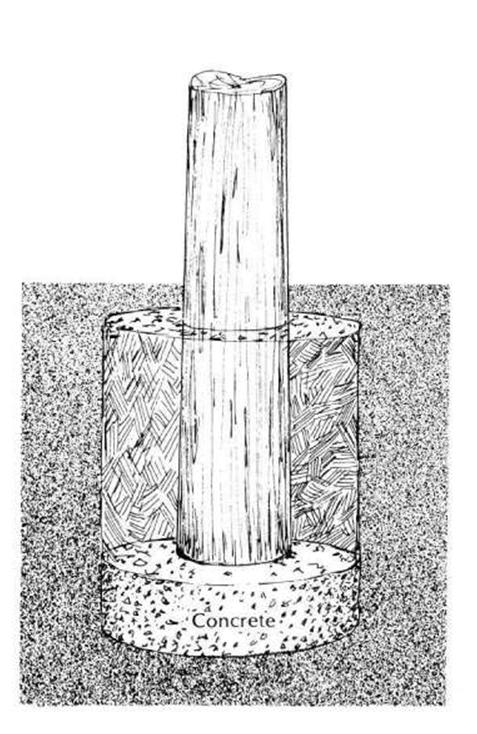Your plan or the soil condition may require that in each pole hole you have a concrete pad at the bottom. A good rule here is to pour the pad half as thick as the diameter of the hole.
Do not set the poles until the concrete has cured.
Pick out the straightest poles for the corners of the building. Then with block and tackle (and/or a few strong friends) insert the outside poles first. Then insert the inside poles if they are required.
Rotate each pole so that the straightest side faces out. Use a wrapped rope and wood lever bar. A peavey may tear the wood. Shovel a small amount of soil around the pole and tamp lightly—just enough to keep the butt end from shifting. Complete embedment of the poles is not done at this time.
Align the poles vertically with a carpenter’s level placed on a straight-edge held against the outer face. Nail temporary braces to the poles and to stakes in the ground, to keep the poles lined up until framing is completed. Locate this bracing in areas where it won’t interfere with the work.

PUNCH PADS FOR THE POLES
Heavy flat stone or poured cement punch pad should be provided for each of the pole holes before the poles are placed.

ALIGNING THE POLES
Alignment of the poles is a very important step and must be done correctly. Normally the outside edge of the poles-those facing away from the building-must be vertical. However, if the building is to be sheathed the inside pole edges must be vertical.
| Ground | Plate | |
 |
 |
 |
| Plate Extends Beyond Rafter to Support End Rafter | Highest Part of Ground |

ANOTHER LEVELING METHOD
Sliding level on string establishes true line.
